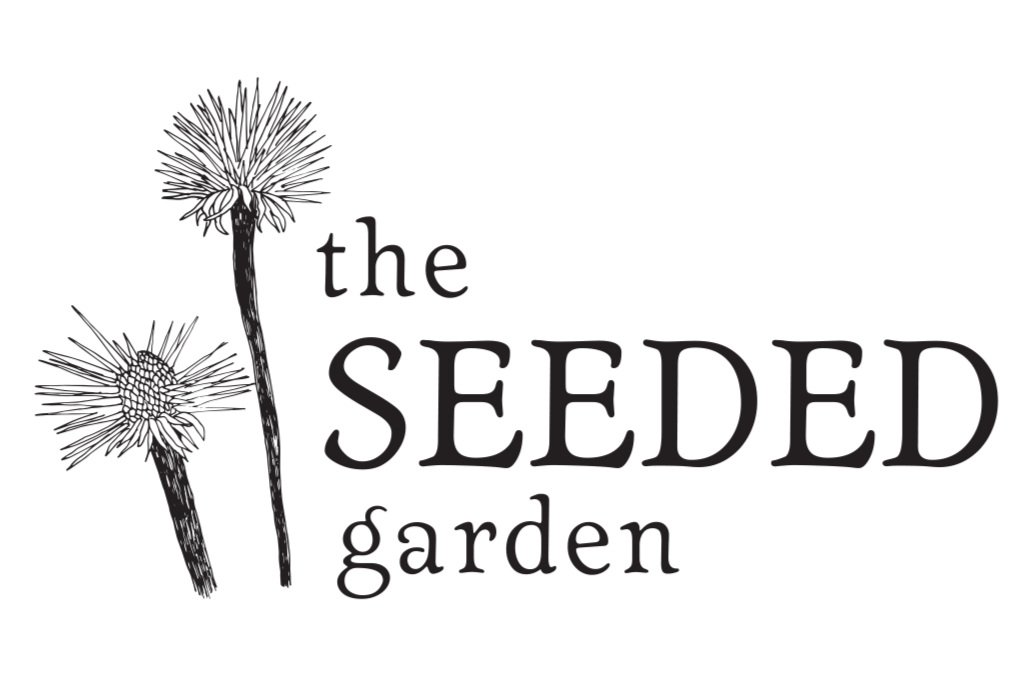A Cut Flower Conundrum
Can Cut Flowers Help Mother Earth?
I recently did a consultation at Abbey’s Lantern Hill Inn in Ledyard, Connecticut. At this Connecticut Green Lodging Certified B&B, proprietors Erika Hall and Peter Burton have been working to remove invasive plants, add more edibles to their landscape, practice composting food waste, and planting shrubs beneficial to wildlife such as Winterberry. I met with Erika to talk about her desire to, among other things, create a cut flower garden to provide fresh flowers for the guest rooms.
I find myself drawn to the idea of a cut flower garden because from an ecological standpoint, an annual cut flower bed filled with Zinnias and Dahlias is not an obvious choice. Pollinators generally prefer perennials and native species, which are best as hosts for beneficial insect and moth populations. Yet, there is a real case to be made for the annual cutting garden as an important aspect of a climate victory garden.
Consider how many times in a year you might have bought flowers; these might include occasions like birthdays, anniversaries, holidays or life changing events such as births, deaths, graduations, or retirements. Flowers are a mainstay in the American cultural practices of gift-giving and have a complex “language” of signification. New technologies and scientific advancements have allowed us to overcome barriers of distance and season to exchange flowers anywhere and at any time of year. But, at what hidden costs?
The US is the world’s largest consumer of cut flowers, however the flowers we buy come predominantly from Columbia and Ecuador. Because flowers lose value for each day they are cut, the ecological footprint of the commercial flower industry is staggering as they strive to get flowers to market thousands of miles away in refrigerated airplane compartments. One estimate made by the International Council on Clean Energy for 2018 suggests the transportation of cut flowers from Columbia to the US for Valentine’s Day alone produced 36,000 metric tons of CO2 (or the equivalent of about 78,000 cars driven for one year). And this doesn’t account for transportation and storage of these blooms between the airplane and the vase.
Transportation is not the only environmental culprit of the cut flower industry; producing cut flowers have drastic human and ecological costs. While the notion of “organic” immediately brings to mind food— not flowers, anyone who has battled lily beetles and Japanese beetles or any range of plant funguses knows that ornamentals are equally plagued by pests and diseases and thus a target market for pesticides, herbicides and fungicides. In addition to water and energy used by flower farms, local peoples bear the biggest burden of the industry’s reliance on toxic chemicals in fertilizers, repeated pesticide and insecticide use, and even preservatives used to extend the life of blooms. Beyond workers at the farms themselves, surrounding communities and those downstream are impacted by chemical exposure, including children. Yet, unlike our food labeling, the flowers we buy do not have to identify country of origin, organic standards, or sustainable production practices.
So, the first way we can keep those flowers meaningful without the added costs is to buy local. Keep an eye out for Connecticut flower farms such as Lindell Flower Farms in New Hartford, CT which is not only sustainably grown but can offer heirloom varieties that might not be able to make the trip from Columbia. And what’s more thoughtful than picking your own bouquet? Down the road from my home in Higganum, CT, Halfinger Farms hosts “Dancing Daffodils,” a pick your own daffodil farm in the season, while Scott’s Farm and Greenhouses in Essex offers rows of Zinnias and other cut flowers throughout the summer months.
As we approach Mother’s Day 2022, maybe we should forgo the bouquet and consider helping mom start a garden instead! There are some real added benefits to your own cut flower garden even beyond the personal joy and wellness that comes with growing things. Converting a patch of lawn transforms a pollinator dessert (that demands a lot of fuel to maintain) into a pathway for bees and butterflies. Annuals are cheap and often easy to start from seed. They provide a long flowering season that spans the gaps between perennial bloom times. To be of benefit to local wildlife, remember that color and shape make a difference. Butterflies need a big landing pad, so look for open flower heads and single blooms rather than doubles or pompom shapes, which make the pollen inaccessible to most bees and pollinators (this is very true of Dahlias, but also Zinnias, and Marigolds). Bold-colored tubular nectar producing flowers such as Salvia or Penstemon can attract hummingbirds as well as pollinators. Consider leaving some seed-heads, which are great for winter arrangements, but are also beneficial for birds. The seeds of annuals such as Sunflowers, Cosmos and Cornflowers are all enjoyed by birds even after the flowers fade.
There is some antagonism amongst environmentalists about growing flowers, not food (and particularly to growing non-native annuals). But I would like to suggest that, given the place of flowers in our cultural practices a cut flower garden is a significant component to the climate-resilient garden and not merely a frivolous auxiliary.




